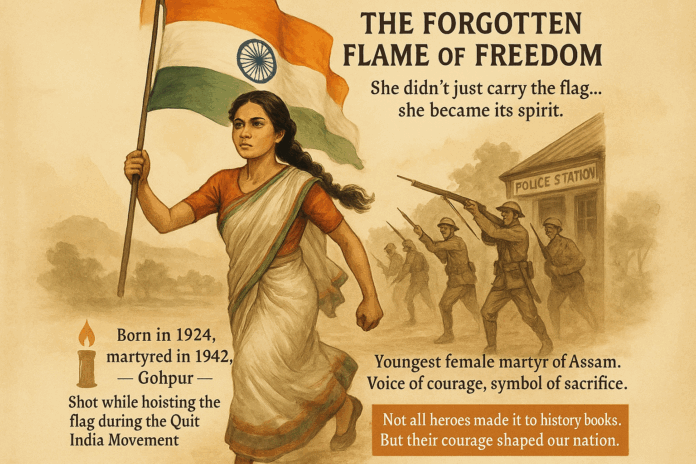“She didn’t just carry the flag… she became its spirit.”
In a time when India was burning with the fire of independence, Kanaklata Barua, a teenage girl from Assam, rose against the British Raj not with a weapon, but with unmatched courage and patriotism.
Who Was She?
-
Born in 1924 in Gohpur, Assam, Kanaklata lost her parents at a very young age.
-
At just 17 years old, she joined the Mrityu Bahini — a group of young freedom fighters willing to sacrifice their lives for the nation.
-
She was deeply inspired by Mahatma Gandhi’s Quit India Movement of 1942.
The Incident That Made Her Immortal
On September 20, 1942, British rule was still iron-fisted in Assam. Kanaklata led a peaceful march with the national flag toward the local police station in Gohpur, intending to hoist it.
-
British police ordered the crowd to disperse.
-
But Kanaklata refused to stop.
-
She boldly shouted, “Vande Mataram!” and kept walking forward.
-
She was shot dead on the spot still holding the Indian flag high.
She became one of the youngest female martyrs of the Indian freedom movement.
Why Her Story Matters
-
No monuments, no textbooks, no mainstream media have widely remembered her.
-
But she gave her life for the right to hoist the flag, which we freely raise today.
-
Her sacrifice is a symbol of courage, commitment, and youth-led resistance.
Kanaklata Barua never held political power. She never saw free India.
But she believed in it so fiercely, so deeply that she laid down her life for its symbol.
It’s time we remember not just the famous faces, but also the forgotten ones who lit the flame of freedom.





